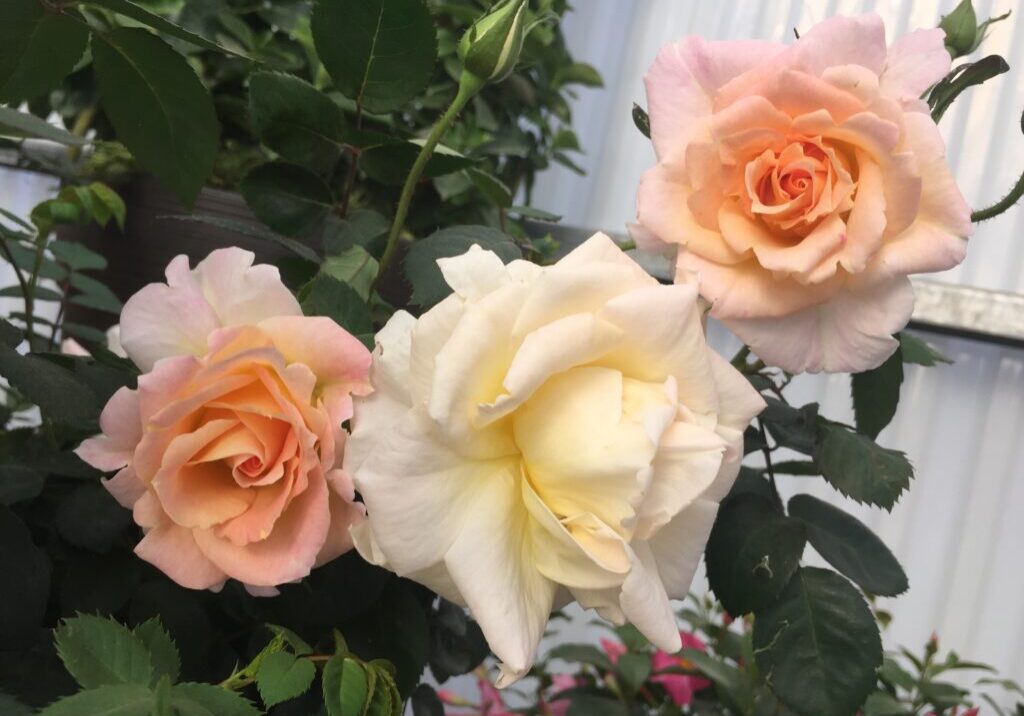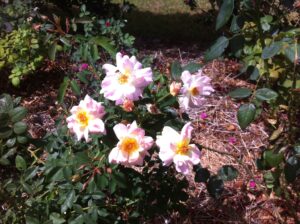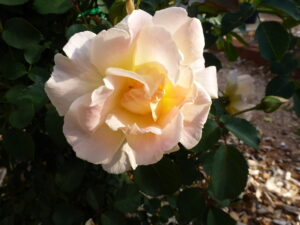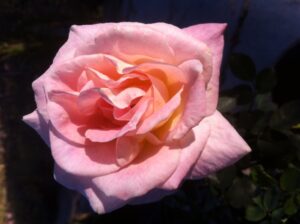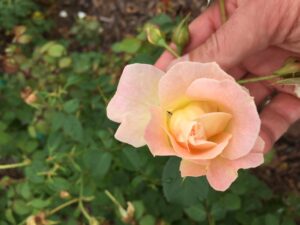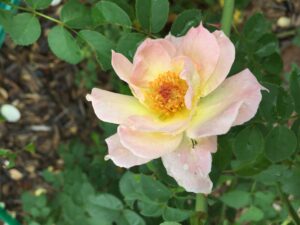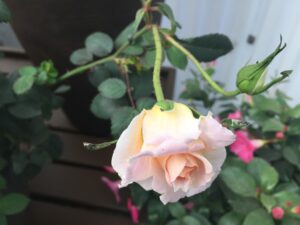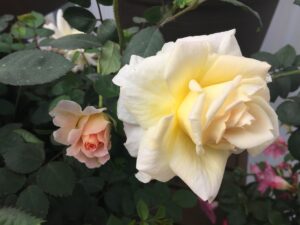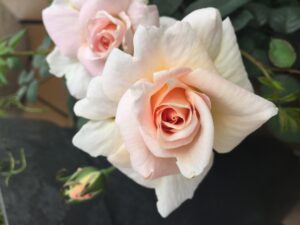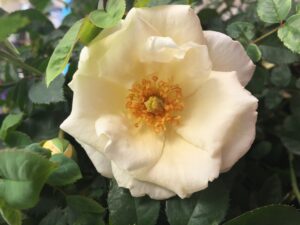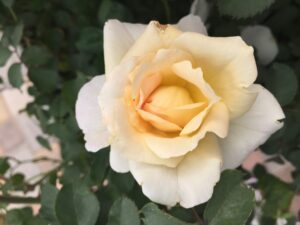Life Cycle: Perennial
Hardiness Zones: 5 to 11
H x W (approx): 4 ft tall by 4 ft wide
Spacing: 4 to 6 ft, on center, for groupings/mass planting
Bloom Time: Season-long; light, continuous flowering with heavy recurrent flushes every 4 to 6 weeks.
Flower: Semi-double flowers are generally apricot with light pink intonations at the marginal zone and soft yellow intonations towards the base. Flower color expression depends on climate, weather, and age of the individual flowers (i.e. each flower’s color will change from day to day as the flower ages). Very strong fruity fragrance with hints of citrus. Flowers are typically borne on corymbs of 4 to 7 flowers
Foliage: Compound leaves with small, pointed leaflets; light to medium (“limey”) green mature foliage, juvenile foliage is nearly void of any anthocyanin suffusion
Habit: Semi-upright to mounded
Containers? No. These are landscape roses
Light Requirement: Best in full to filtered sunlight
Water Requirement: Regular irrigation, but plant in a free draining soil
Maintenance Category: Like all roses, Brindabella varieties are relatively low maintenance but they will definitely benefit from regular feeding and watering
Uses: All Brindabella Roses varieties are very resistant to black spot and powdery mildew which, when combined with the beautiful flower forms, colors and fragrance, make them excellent options for landscape roses in all climates
Maintenance Notes:
- Like all roses, the bloom set and individual flower color/size/health is optimal when there is adequate water and nutrients available to the plant
- For best results, fertilize once or twice a season with a with a complete slow-release fertilizer that contains micro and macronutrients.
- Prune as needed to shape the bush, ideally after a bloom cycle
- Keep a watchful eye for typical rose insect pests and treat as needed. Detrimental roses diseases that are typically seen in the garden – namely black spot and powdery mildew – are not a major concern with Brindabella varieties, but gardeners should still keep a watchful eye for these and other rose diseases

